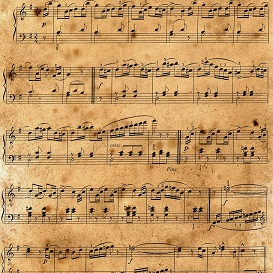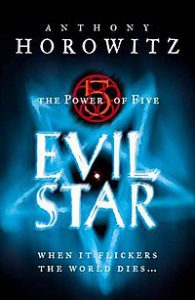This is mark Joseph “young” blog entry #350, on the subject of The Return of Vazor.
What seems a long time ago, someone who posts under the name “Vazor” found Temporal Anomalies in Popular Time Travel Movies, and read extensively the articles on the site, including particularly the theory articles. He then wrote Analysis of the Replacement Theory of Time Travel, in which he praised the ideas but also raised questions. If the dates are to be credited, our interaction, including my reply Vazor’s Time Travel Questions First Response, appeared at the end of June of 2008. Obviously from that title I was anticipating a reply from him, and now he admits that it is long overdue but presents for my consideration A Long Overdue Time Travel Post in which he raises some more questions. Of course, since 2008 I have added a significant amount to my site, and I’m not certain what he has read from it, but we’ll see what we can cover.

I would say I have a lot of reading to do. He is responding to something I wrote twelve years ago in response to his comments on articles I wrote before that, and getting a clear notion of what articles he has not seen will be part of the problem. I have read his recent post, but I think I will have to read both his previous post and my response before I can tackle this. Also, I am doing the initial draft as a web log post, but if it gets too long I am going to have to reformat it to add to the Temporal Anomalies site in the Conversation section that has been untouched perhaps since our last interaction.
Vazor spends a fair amount of time discussing parallel dimension theory and distinguishing it from what I have called divergent dimension theory. I have not put dates on my pages, but I made the same distinction between parallel dimension theory and divergent dimension theory in my Theory 101 series originally published at TheExaminer.com. I don’t see any complications there, other than that I think we both reject both of those theories as not being time travel.
I am then quite surprised when he says
I really only have one big question left. How does an infinity loop get created? Why does the fact that the young Traveler will not travel back, destroy the future of the C-D timeline? Won’t Traveler and younger Traveler just live on in peace following the future of the C-D timeline? In my original post I asked this question, but it was never answered.
I am surprised because it seems to me that this was the first thing I answered in my original post. However, I will attempt to respond more briefly. I discussed the infinity loop in that same theory series, in the section What Is an Infinity Loop?.
The short answer is that the arrival of the time traveler in the past is caused by the departure of the time traveler in the future. Should the time traveler not depart from the future, he will not arrive in the past. That part is simple. The part people don’t get is that having arrived in the past the time traveler has created an entirely new history, and that history replaces the original one (hence the name “replacement theory”), moment by moment erasing the events which had occurred and replacing them with new ones. Eventually time will reach the moment at which the time traveler departed for the past, and that departure is erased; since that departure is the necessary cause of his arrival in the past, that arrival is also erased–unless in the new history the alternate self, the version of our time traveler for whom this is the only history of the world, makes the same trip to the past for the same reason. Failure to do this undoes the causal chain that created the history in which the traveler arrives in the past, and so restores the original history.
I feel like this is the hundredth time I’ve attempted to write that explanation for someone, but hopefully those three iterations together will be adequately clear.
Vazor seems almost to grasp this, but then asks
Why does the C-D timeline need to exist? With the way the rest of the theory treats timelines, the timeline is determined from the moment of the Traveler’s arrival. So wouldn’t it be at that moment that the cause is no longer found and the adult Traveler must cease to exist? I suppose this is equivalent to saying that time travel is not possible, unless the traveler jumps with the planning and preparation that will ensure that an N-jump will happen.
But let us assume time travel is possible regardless of where the new timeline will go. In that case, my question is, why does the C-D timeline need to revert at that particular time? You might say “because that is the point at which it is now certain that the young Traveler cannot recreate the events of the C-D timeline.” However I posit that you could be certain of that at different times. Perhaps the point at which the Traveler changes the younger Traveler’s mind should be the revert point? No, the young Traveler could change their minds. Perhaps the young Traveler is delayed a little but would have left from the C-D timeline at a little bit later point in time than D and successfully recreated the events at point C? I can see that you need to resolve the cause and effect somewhere, but wouldn’t it be simpler if it happened at the moment of the jump back to C?
I am again surprised because Vazor previously mentioned having read The Spreadsheet Illustration of Temporal Anomalies; however, many people who have read that have missed some of its critical points. Permit me to clarify.
What the spreadsheet illustration attempts to posit is a chain of causes and effects that create either a stable or an unstable loop. In essence, the value of cell A1 is dependent on the value of cell A5, which is in turn dependent on the values of A4, A3, A2, and A1 in sequence. If this chain of formulae results in A1 having the same value derived from A5, we have a stable loop, and the rest of the spreadsheet can be derived from the value of A5. If, on the other hand, the value of A1 keeps changing, then the value of A5 keeps changing, changing the value of A1, and the rest of the spreadsheet cannot be calculated because the value of A5 is not constant.
What people miss is sort of two-fold:
- The value of A5 changes instantly when the value of A1 changes, because A5 is dependent on A1; but
- Sequentially before the value of A5 changes the values of A2, A3, and A4 all change, and those steps are necessary for A5 to change even though they, too, change instantaneously.
In exactly the same way at the instant the time traveler arrives in the past he changes all of history up through the moment he departs or fails to depart from the future, and in that sense his arrival in the past is instantly either confirmed or undone, but all of the events that lead from his arrival to his departure must happen before that confirmation or undoing can occur. Further, we experience those intervening events as time, and thus we have a CD timeline because we need the causal chain which determines whether or not the traveler will depart from the future.
Did we make sense this time?
How does replacement theory explain the conservation of matter problem?
Honestly this question has been asked before, but not quite this way.
Conservation of matter is simply that matter and energy cannot be created nor destroyed. Under the replacement theory, there would appear initially to be a creation of matter at the arrival point, as the time traveler (and whatever he brings with him) are introduced as matter and energy that were not present, and there is an increase in the total mass of the universe. Since any sane time traveler aims for a space in which the matter currently there is easily displaced–air, typically–I would not expect there to be a problem of matter arriving atop matter. It is, I suppose, a plausible problem, and one that would also occur if we were talking about matter transmission or replication, but generally speaking the worst ordinary outcome would be an increase in atmospheric pressure of a small amount.
That increase in the total mass of the universe is effectively borrowed from the mass of the universe in the future, and has to be repaid at the moment it was borrowed–that is, if we send two hundred kilograms back from 2020 to 2010, we increase the mass of the universe by two hundred kilograms at 2010, but decrease it by the same amount at 2020, thus preserving the total mass of the universe. In a sense, we moved the barbells to another room and then moved them back.
As to the four proposed time travel stories, they would need more details to know what is intended and whether it is possible. The third, though, is something similar to something done (or at least discussed) in a Multiverser game. Let us suggest that your villain built his robot and his time machine in 2018, and sends his robot in his time machine back from 2020 to 2019.  Since in 2019 he already has a robot and a time machine built in 2018, he now has two. In 2020 he sends back both robots and both time machines, which both arrive in 2019, and now he has three of each. He can continue doing this interminably, but we’ll say he stops at ten, so now in 2019 he has ten robots and ten time machines.
To clarify, the first time through he has one robot, and in 2020 he sends it back to 2019 so that he has two robots, which we can call #1 and #2. In 2020 he can send #2 back to become #3, but he must also send #1 back to become #2 or #2 will not arrive in 2019 in the third iteration. Thus by sending two robots back from the end of the second iteration he has in the third iteration three, not four, robots.
The problem is that he must send back nine of them (and technically the right nine) at the right moment in 2020. After all, number ten is technically number one whose history includes that he has traveled to the past nine times, and if number one now fails to depart for the past, all the others will cease ever to have arrived in the past, and we crash into an infinity loop in which our villain has one robot, one time machine, and a plan to duplicate them by using time travel. Further, to move beyond the departure point in 2020 our villain must systematically send back eight, seven, six, and so forth until only the last robot, who has been sent back many times, is the only one which remains, and then one robot continues with the villain into the future.
So he has to be aware of this, and make good use of his robots in 2019 before he has to start sending them back.
I don’t think I’ve answered everything, but I think I’ve addressed everything that matters. I look forward to Vazor’s response perhaps a dozen years in the future or, if he figures out time travel before I do, a dozen years in the past.


